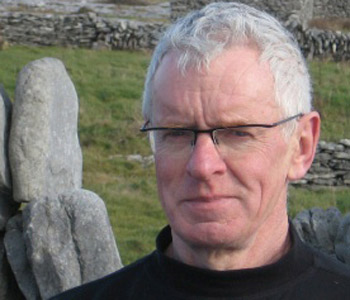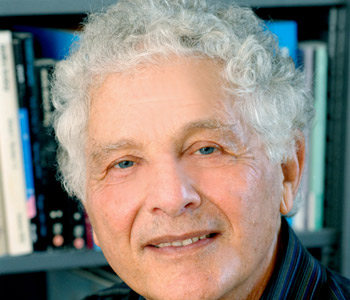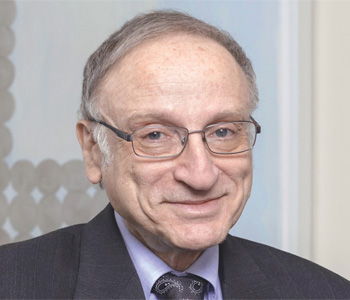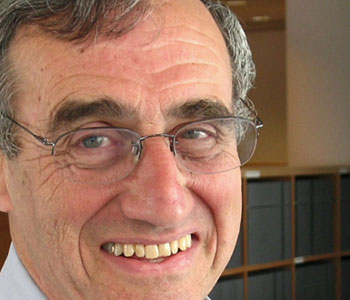Mark Fenster
Conspiracy Theories: Secrecy and Power in American Culture (revised and updated edition)
University of Minnesota Press
400 pages, 6 x 9 inches
ISBN 978 0816654949
I make two basic claims in the book. First, I argue that the dominant mode of understanding conspiracy theory is flawed. Academics and journalists have wrongly assumed that conspiracy theories are necessarily a pathological cry from the political and social margins. The notion that they and their adherents are “paranoid” is most frequently associated today with the work of Richard Hofstadter, a preeminent American historian in the 1950s and 1960s, who placed conspiracy theories within what he called the “paranoid style in American politics.” Viewed this way, a conspiracy theory is symptomatic of a larger sickness from which the believers suffer, caused in part by their marginal position within society. Conspiracy theories are more complex than this simple story tells—historically, politically, and culturally. They have played a key or at least non-trivial role in many of the social movements throughout American history, from the beginnings of the Republic to the present day. Moreover, conspiracy theories remain remarkably popular. In the political world, politicians and partisans disparage their opponents’ beliefs as conspiracy theory while they maintain that those same opponents are engaged in conspiratorial acts. Do I even need to give examples of how widespread conspiracy theories are in popular culture? Or how in our private conversations we frequently describe dealings in the workplace or in the political world as conspiratorial, whether in jest or in all seriousness? The book’s first claim, then, is critical: we need to rethink the basic conceptual framework by which we understand conspiracy theories.
The second claim suggests an alternative: Conspiracy theory needs to be understood as a subset of populism, which has a long and important tradition in American culture and politics. Fears of conspiracy aren’t necessarily “good” or “bad”—conspiracies do happen, but conspiracy theories frequently chase illusions and have pernicious effects. We need to be careful not to dismiss them out of hand—nor, for that matter, should we embrace them unthinkingly. I argue that this populism emerges in two practices endemic to conspiracy theories: its commitment to interpreting the world to constantly find the traces of power, and its ongoing effort to tell power’s story, to narrate history and the present as a conspiracy.
In fact, I’m fairly skeptical about the possibility of finding a single cause or even an identifiable pool of causes for belief in conspiracy theory. So my second claim is less an explicit assertion that I have identified a “correct” approach to understanding conspiracy theory and more a commitment to observation and description. It is an effort to damp down the normative posturing that labeling as “pathology” assumes. Conspiracy theories proceed from an assumption that is undoubtedly correct, even banally so: we don’t all have equal access to power and capital. They then seek evidence of the extent to which the system by which those assets are distributed—the state and economy—is both hidden and corrupt, and they construct elaborate stories that explain the conspiracy’s secrecy and villainy. These steps are shared not only by the most committed conspiracy theorists; political novelists and investigative reporters, for example, also try to explain and narrate a world of unequal power. They do so differently, but they share with conspiracy theorists many of the same interpretive and narrative strategies. The move from a theory of power to interpretive and narrative acts is a part of our cultural and political landscape. To call it “pathology” is to miss its pervasiveness, attraction, and authority in the present day.

Conspiracy theories proceed from an assumption that is undoubtedly correct, even banally so: we don’t all have equal access to power and capital. They then seek evidence of the extent to which the system by which those assets are distributed—the state and economy—is both hidden and corrupt, and they construct elaborate stories that explain the conspiracy’s secrecy and villainy.
I came to political consciousness in the 1970s. The first president I remember was Richard Nixon, and the first political controversies I remember were Watergate and the latter days of the Vietnam War. At the same time, the political movies of that era—Three Days of the Condor, All the President’s Men, and the like—suggested that a secret world of power seethed underneath surface appearances. These political and cultural reference points had and continue to have a profound effect on me. My first impulse is to disbelieve those in power, and my taste preferences lead me to novels, television shows, and films that deploy themes of secrecy and conspiracy. Oliver Stone’s JFK came out in 1992, reminding me of this obsession just as I was finishing my dissertation on popular music. I plunged into research on the world of conspiracy theories and theorists as soon as I deposited the thesis.
I was also in the midst of a career change as I was finishing the book. At the time, I was becoming more interested in studying the law and the state, and was frustrated with the exceptionally limited career opportunities I faced in teaching media studies to undergraduates. My transition to law school and its modes of argumentation colored some parts of the book’s first edition and had an even greater effect on the second edition. While I was writing the new edition’s chapter on 9/11 conspiracy theories, for example, I was thinking not only as a cultural theorist, but also as a lawyer and law professor. I questioned not only what conspiracy theories and this interpretive community say about contemporary popular politics, but also whether the state can respond to conspiracy theories and theorists authoritatively, and if so, how. The 9/11 Commission provided a great opportunity to think through those questions. Which I actually did twice: once in the book’s final chapter, from the perspective of conspiracy theorists, and once in a separate article I’ve written on the Commission from the perspective of the state. (View a draft.)
Nevertheless, the new edition still retains its strong cultural focus, exploring texts and practices ranging from mainstream popular culture (JFK, The X-Files) to high culture (Delillo’s Libra, Pynchon’s novels) to alternative culture (the independent films of Craig Baldwin) to conspiracy culture (from conferences to fanzines) to fundamentalist Christian culture (including the Left Behind series). The book constantly switches from culture to politics and back again, implicitly arguing that the line between the two is exceptionally fluid—if it exists at all.
In fact, two close-ups.
The first is on page 17, a very brief discussion of what the book isn’t, as opposed to the remainder of the introduction, which identifies what the book is. The first edition came out just before a bunch of really fine books from different fields were released, including ones by Jodi Dean in political science and Peter Knight in American Studies, and two essay collections by anthropologists (including one edited by George Marcus). All of us struggled against the expectations that academic books on conspiracy theories would either give a history of them (wide-ranging or focusing on a particular type or period of conspiracy theories) or debunk them. Instead, the books sought to read conspiracy theories symptomatically, as aspects of American culture and democracy.
To those who view conspiracy theories and theorists as dangerous and strange—that is, to someone persuaded by Hofstadter’s assertion that they are pathological—these projects (including my own) appear troubling. We seem to validate conspiracy theories and to waste valuable time and effort that could be spent proving them false. But the problem is that, time and again, the state and media find that showing the factual and logical errors in conspiracy theories doesn’t make them go away. Rather, theorists either deny the errors, revise their theories in different directions towards different factual claims or explanations, or question the authority and motives of those who seek to disprove them. Even if Hofstadter was right—and in fact I appreciate his willingness to consider the conspiracy “style” even as I reject his dismissal of them as “paranoid”—his approach is incomplete. The cultural, narrative, and logical world that conspiracy theories operate within needs further explanation. This is not to deny the importance of histories and debunkings, but it is to affirm the importance of work that explains the broader as well as the specific context within which such theories emerge and circulate.
The second is on page 278, the final page in the new chapter on the 9/11 conspiracy theories. At that point, I’ve just completed a thick description of Loose Change, the most popular and widely viewed documentary espousing the theory that the state’s explanation of the 9/11 attacks—the al Qaeda conspiracy—is dubious. The chapter as a whole is largely a thick description of such theories, the media that circulate them, and the community of believers that has emerged, especially during 2006, around the time of the attacks’ fifth anniversary. I remain on the descriptive level purposely throughout the chapter because I think the episode really illustrates what the book as a whole argues: that conspiracy theories operate and succeed as much as modes of narrative and interpretation that offer alternative means to understand the past and present as they do as expressions of political pathology. Loose Change offers a complicated challenge to the dominant explanation, one that’s at heart a simple counter-narrative of corruption and evil, one that calls into being both a political identity—the doubting, persistent, and thoughtful researcher—and a political community—a collective community of knowledge seekers. Viewed as a mode of rhetoric and story telling, it’s a really powerful film, even if I don’t believe much of what it claims.

Time and again, the state and media find that showing the factual and logical errors in conspiracy theories doesn’t make them go away.
I hope that the book will be seen as one piece of a larger effort to rethink conspiracy theory. There are a lot of questions and methods that the book either ignores or glosses over because they were outside the book’s scope. These include insights from social and cognitive psychology, social history, extensive ethnographic research, and from comparisons across culture as well as time. I think the book’s contribution is its critique of the dominant approach to understanding conspiracy theory and its effort, through its reading of texts and practices, to posit a different, more productive way of thinking about conspiracy theories.
I intentionally sought to write the book in a way that would be legible to non-specialist and even non-academic readers without entirely abandoning the scholarly endeavor of working through the existing academic literature. I hoped to strike a note between jargon-heavy books of theory, which no one but a small number of avid academics and intellectuals can follow, and popularizations of scholarship, which lose all the intellectual heft and credibility of the academic endeavor. This is a topic of wide interest and concern, and I’d like to be able to reach those with a serious interest in conspiracy theories—whether because they believe in them or because, like me, they just find them fascinating.
Finally, I would like also to reach across the conspiracy theory divide. When the first edition came out, I sent copies to two people who were quite helpful as I was writing it—a publisher of a conspiracy fanzine and a political activist who writes frequently and forcefully about the danger of conspiracy theories. Both of them told me they liked the book, which seemed like a great accomplishment given their quite different perspectives on conspiracy theories’ value and proximity to the truth. I fear that because I clearly don’t believe in the 9/11 theories, most members of the “truth movement” will focus only on that chapter and really won’t like the book. That’s fine and inevitable, I suppose, given that I doubt many of the assumptions and assertions upon which they’ve built their community. I would hope that they’d recognize the distinctions I make throughout the book between my approach and the mainstream view of their project, but I hold no illusions about that as a possibility.




We don't put paywalls. We don't distract you with ads. We don't sell your data.
Please help to keep this running!